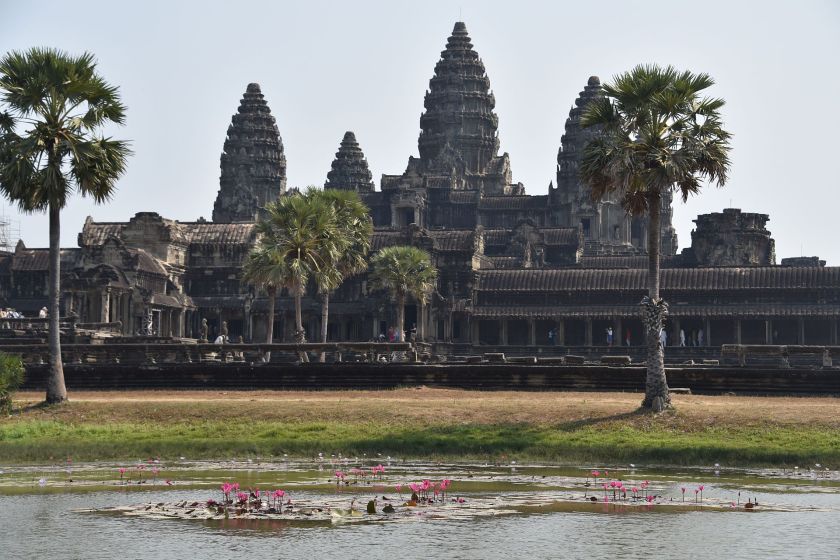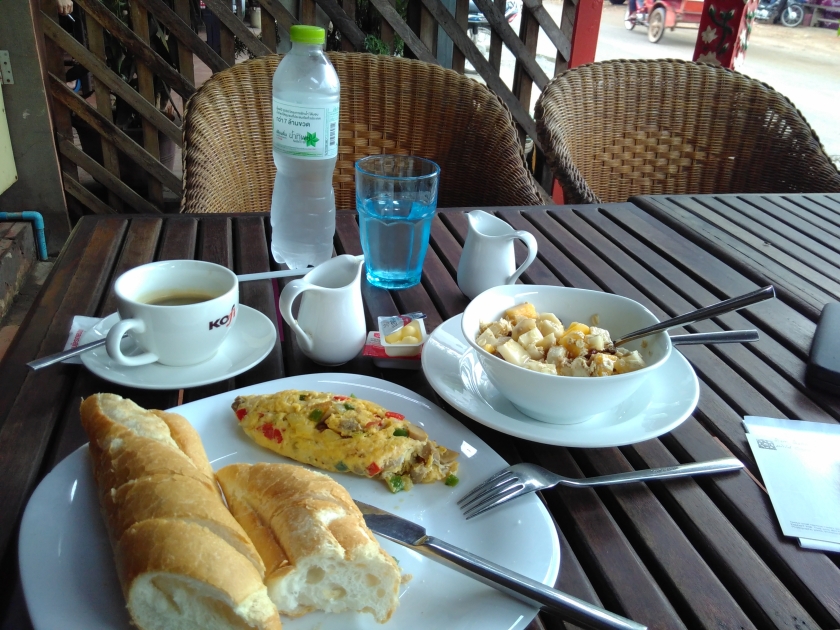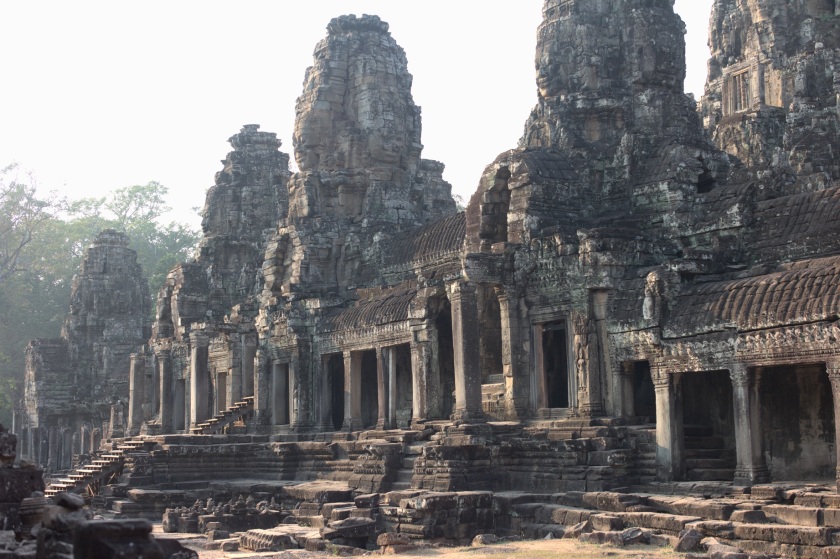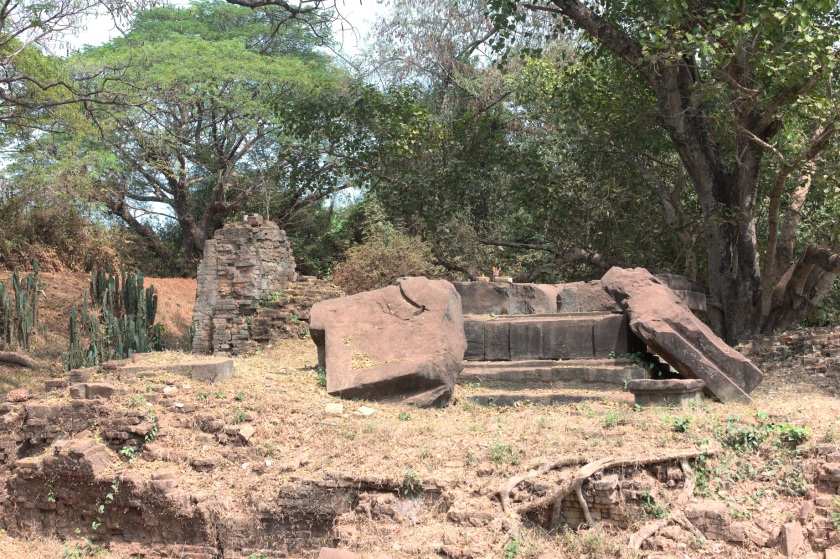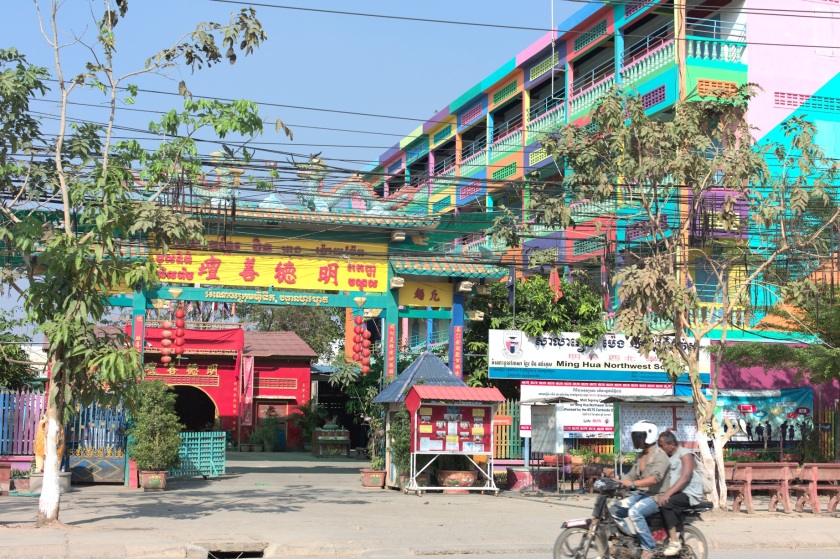Five days after I left Siem Reap, I come across the Mekong at Stung Treng today. The bridge does not look very spectacular, although the river is about 1.5 kilometers wide here, but the river does make a difference – and it looks so untouched. Since the Mekong can only be navigated to the border with Laos, it is not economically interesting as a waterway in this region, and therefore no large ships can be seen. The city is also not particularly large, but is considered a border town to Laos, which is about 50 km away, and is the administrative seat for the Stung Treng district, as well as a hub for various bus connections further into the country or to neighboring Laos.
After the three days of cycling and tuk-tuk in Angkor Wat, it was almost like a new beginning and a good feeling to be able to ‘get back on the road’ with all the luggage on the bike. But I didn’t want to leave Siem Reap without rolling through the large park of Angkor Wat again. The Banteay Kdei temple was still missing and was only a short detour on my route. A small temple ruin that is not approached on the shorter tours through the park and therefore has relatively few visitors, although it e.g. is not that far from Ta Phrom Temple.
With this little detour I was not tempted to use the busy NR6 eastwards to get away from Siem Reap and towards Preah Vihear, but simply followed the road leading out of the park and was still able to benefit a few kilometers from the shady forest.
There is a small (tourist-prepared) settlement, which is intended to demonstrate a little the rural life of the region and with some restaurants is waiting for visitors from the park of Angkor. At early noon there wasn’t too much going on and I wasn’t stopped, my route to Svay Leu was still long enough.
Far from the main connecting road and far from the tourist spots, the picture changed a little. This side route took me through long-drawn-out settlements with partly modern Khmer-style houses and simpler wooden buildings, but actually always clean plots, in contrast to the first days between Poipet and Siem Reap.
People often farm on a small scale, with a few cattle, or with a few plots of rice, with the fields currently dry. Shops are rare, however, and can almost only be found at intersections of different streets. But almost always there is an unexpected and at the right time a street kitchen on the side of the road that offers soup with noodles or fried rice with egg or can conjure up quickly.
On the relatively short stage from Svay Leu to Moreal on the second day, there is noodle soup for breakfast and I eat a cucumber noodle soup again in the late morning (but then cold), which somehow reminds me of Estonia and a cucumber soup that I once tried there a few years ago.
It is nice that you can always address the friendly people directly and they are not shy themselves, even if the communication does not work at all. The selection in the pots is never particularly large, and yet I often get more on my plate than I expected. In Svay Leu I wanted to give up in the evening, because by 7pm I was already late and some of the small restaurants in town were already tidying up. A young cook told me that I could come to him for breakfast, but he was already closed. Two other covered halls with tables and chairs were full of guests, but self-cooking with a hotpot was the order of the day. The operators only sell the ingredients there and you have to know what you want. Not the right choice for a hungry individual.
In the end, I got a delicious portion of fried noodle with lots of vegetables from a very busy cook with a wok and grill who only had two tables in his open space. While I was eating there people kept coming over to pick up their phone orders and sat down at my table with two young girls who ate a large portion of papaya salad (at least it did look like) with crayfish with relish and intense entertainment to have. Apparently the specialty from the cook’s large wooden mortar, in which he always prepared new dishes. With a loud crack and crackle, the two girls nibbled the crayfish’s shell – also a peculiarity of the Khmer, seafood and meat always with as much and splintered bones as possible to eat. If you order rice with chicken, you can often (not always) adjust to a lot of cartilage and bone, but little meat.
The last five days have cost a lot of strength, since I now almost always had to drive against the gusty east wind, sometimes through profiled terrain. There are no special highlights along the route, actually the ideal terrain for making the route. In any case, people who came towards me benefited from the wind. That was two Dutch women half-way around noon today, and a little later in the afternoon a young Briton on a world tour. That also that I am not driving an unknown route. Maybe that’s why the policemen smiled so mischievously at their checkpoint – oh, another madman on a bike.
Final Tiles Gallery id= does not exist
In any case, children on the side of the road are still happy about every light-skinned cyclist who comes by and sometimes shout “Helloo!” Before I even register them. Schoolchildren often wave a little more cautiously, but I am perceived as a colorful tourist by apparently many more people than I see as I roll past their often gray everyday life.
I rather notice the smells, from the burning plastic waste, from the charcoal fire, from boiling rice, from the cassava roots drying on the roadside, because for about two days I pass through an area in which a lot is grown. The harvest has apparently just run, because on the one hand I see many single-axle trailers with tractors that are loaded with cassava roots and drive to the next collection points. The roots are chopped into strips by hand and placed extensively in the sun to dry. In the warmth, these white roots exude a typical sweet smell, which naturally rises into my nose as I roll past.
The dry roots are packed in sacks and brought back to warehouses with the single-axle tractors that are widespread throughout Cambodia, from where they are transported away by larger trucks for further processing.
There was such a warehouse in Moreal, not far from the guest house where I had stayed, and in the evening a few trucks were busy loading.
The warmth during the day, the rising smoke and haze in the evening, dogs barking almost everywhere at night, and from six in the morning xylophone-like music and spherical sounds from the nearest monastery. The sounds almost never stop, and yet there is silence at some point in the night. There was a family gathering somewhere in Moreal, and party music was playing in the afternoon and stopping almost all night long, until after a short break in the morning it was ‘taken over’ by the monks and their xylophone sounds.
This music can be very soothing if it is not played too loudly, which is unfortunately usually the case. Here in Stung Treng, however, I have never heard of the monastery / temple about 400 m away.



























